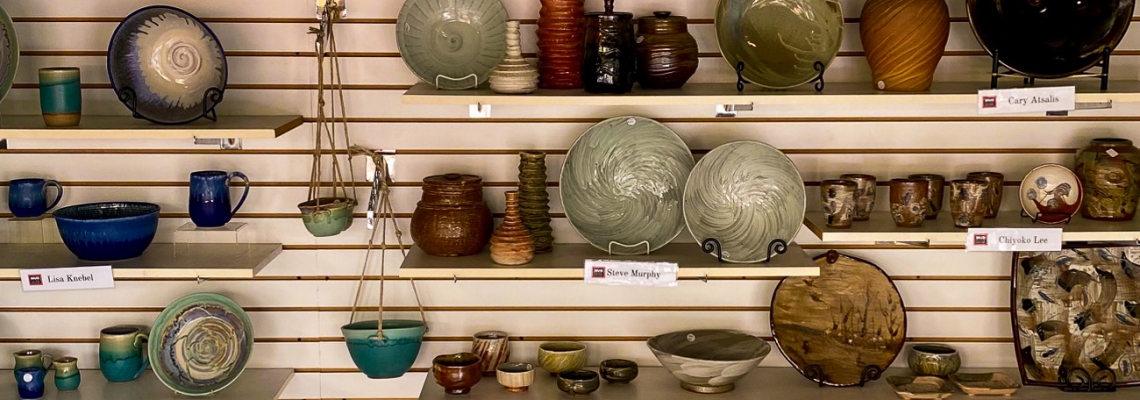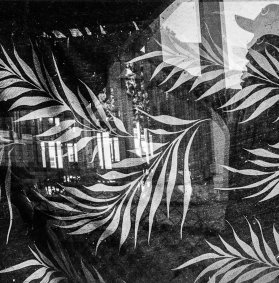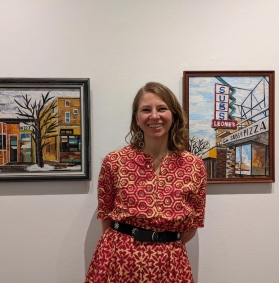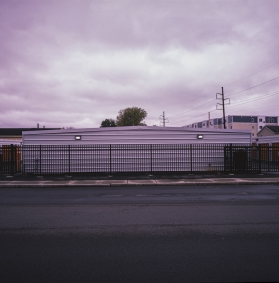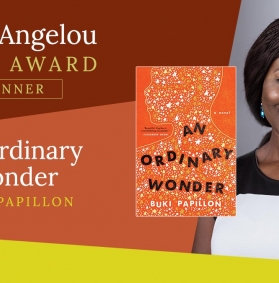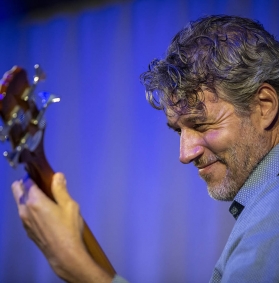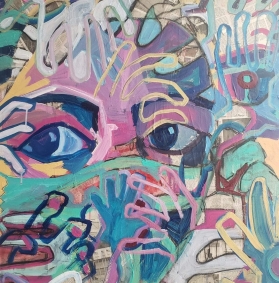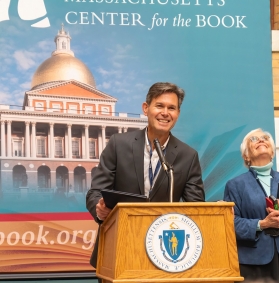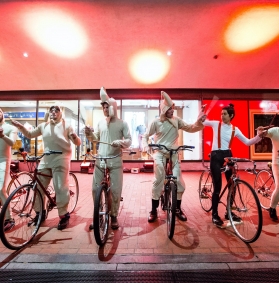Interview with January Artist of the Month, Lynn Gervens by Charan Deve reaux
reaux
How did you first develop an interest in ceramics? Is there someone or something that was important in getting you on your way?
My aunt was a painter and photographer, and was very encouraging of my creative work. I took some ceramics classes in high school and went to the University of Illinois Champaign-Urbana to study art. I wasn’t a very confident painter or drawer (I got a C- in my first college drawing class), so I started to think more about creating three-dimensional work. I explored glassblowing and ceramics, and got a BFA in ceramics.
Post-college, I was looking to find studio space or work in clay somewhere. I was in a studio in Chicago for a little bit and then moved to Boston. I wanted to go somewhere else for a while and I knew some folks here. When I arrived, I looked for a studio space and found Mudflat and was able to get a studio.
Can you talk about some of your early experiences as an artist?
When I first moved to Boston and was working in clay, I was doing wholesale and retail selling of my work, going to weekend or week-long craft shows to sell my pieces. I never found that to be good for me, selling my artwork for a living. At Mudflat, I found teaching opportunities. Teaching was good for me, and then I became the bookkeeper and the studio manager. I fell into arts administrator jobs because I could be involved in ceramics all the time, so I chose that path. It made it easier to make a living. I had a job in the arts, but I could have access to studio space to do my own work, and not have to rely on selling my work.
make a living. I had a job in the arts, but I could have access to studio space to do my own work, and not have to rely on selling my work.
How did you find your way to Somerville?
Mudflat started in East Cambridge, and moved into Somerville in 1985 after the building in Cambridge was sold to a developer. All of the artists in that building had to go someplace else. Some went to Boston—that was around the time when [Somerville’s] Brickbottom artist studios started. Mudflat moved from East Cambridge to East Somerville, into a space that had been Tucks Department store on Broadway. It was a bigger space for us, and we were in that building for 28 years, about four blocks from where we are now.
What influences or interests inspire your work?
Mudflat recently purchased a soda kiln, which is a different way of firing pots than in gas-fired kilns. I’ve been using the new soda kiln to fire my work, giving me opportunities to explore different clay bodies and surface treatments and atmospheric effects. It’s exciting because it’s a new process at the studio.
Can you talk about some of your recent work?
I mostly make wheel-thrown objects, working on the pottery wheel. In my career, I’ve worked with porcelain clay and a limited palette of glazes. I make things you can use for serving food, eating or displaying flowers. Sometimes the forms are round, and sometimes they are altered, based on function.
In a soda firing, the atmosphere of the kiln affects the outside of the clay, so you can use different [liquid clay] slips or underglazes for detail. The soda interacts with the silica in the clay to create a glazed surface without putting any glazes on the piece. You can get different effects depending on the slip and the clay body.
What do you like about the process?
I don’t get a lot of time to spend in my studio. It’s in the opposite end of the building from the office – I can’t decide if that is good or bad. Being in my studio is a time to immerse myself in thinking about what I want to make. Because it’s no longer a daily practice for me, it takes some time to get settled. You get to think as you are wedging the clay and preparing to work. What am I going to do? How much clay do I need? I might start with a series of ten or twelve cups as I settle in. How are you holding your hands? How are you moving the clay? How are you forming those pieces? It’s like the first cookies you put in the oven; some are not so great. But I do my best thinking when I’m working with the clay, I can make a series of forms, cups or bowls or plates. I consider how I’m going to decorate them, fire them, alter them, make the forms more interesting.
In addition to being an artist, you are now the Executive Director and an instructor at Mudflat Pottery School, which recently celebrated its 50th anniversary. Can you talk more about how you got started there?
Mudflat is in our 52nd year. When I came to Boston in 1978, there were a fair number of clay studios in the Cambridge area—it was the 70s, and pottery was big. There was a place called Clay Dragon, one called Clayground, and another called Centering on  Cambridge Street near the old Mayflower Poultry. Some of the studios from that time have closed or folded, but there are still many places in the Boston area to work with clay—Mudflat is just one of many. For me, Mudflat felt like a comfortable place to be and there was space available. It was already a nonprofit, so I was able to get involved and start teaching.
Cambridge Street near the old Mayflower Poultry. Some of the studios from that time have closed or folded, but there are still many places in the Boston area to work with clay—Mudflat is just one of many. For me, Mudflat felt like a comfortable place to be and there was space available. It was already a nonprofit, so I was able to get involved and start teaching.
What do you enjoy most about teaching?
I enjoy sharing my passion for working with this material and getting others excited about it, watching how it clicks for them, especially working on the wheel. It looks easy, but it’s complicated, the eye-hand coordination and getting the material to move the way you want it to move. Watching people learn how to do it is gratifying. Also, being a teacher helps you understand how you think about clay and discover how to articulate the process for people. For me, being a teacher is an interesting opportunity to learn.
Can you talk about converting a former Somerville theater into the home for the school?
Mudflat needed another space; we had outgrown the space we were in. We spent a lot of time looking at other buildings. We wanted to find a space that was big enough and was affordable for us—and wasn’t being snapped up by development. This was around the year 2000, and it was very competitive and hard to find spaces.
The city was looking for a reuse of the old Broadway Movie Theater, which was nearly 100 years old. They had a task force try and figure out what would happen with this space. Eventually, they sent out an RFP [Request for Proposals]. We put in a proposal, and went through a long process with the city and were eventually awarded the building. There were legal challenges that dragged things out for a long time. Nine years later, we were able to start the renovation, which was a year-long process. It is the building Mudflat deserves to have and we’ve now been here for 12 years. It is beautiful, we love it and we were able to stay in Somerville.
After two years of not being able to host open studio events, what is it like to have in-person events again?
It’s been great to re-open for our classes and workshops and to welcome people back into the building. When we do open studio events, we have about 96 people who participate – in-house artists, faculty and staff and more advanced students. It is a great way to celebrate the work being made. We do open studios twice a year, with Somerville Open Studios and another in December. We also use the opportunity to do a top-to-bottom cleaning of the studio.
Our December 2022 sale was financially the most successful one we’ve ever had. Clearly, there was a demand for it, to see the work and interact with the artists—it was a great celebration.
With such an important job, how do you find time to do your own creative work?
I have to be very intentional about finding the time to get to my studio—it’s too easy to have all the administrative tasks become most important. There are lots of deadlines, things that are time sensitive, that need to happen. Our staff gets bigger, so there are lots of people to manage. Sometimes it’s hard to carve out the time. I have to be intentional, even if it is just an hour a couple of times a week. But I get huge satisfaction in creating a place where people can do their work. We have 350 students and 30 people in studios. People are excited to work in clay and share that work. Sometimes, I miss doing my own work, but I get a lot of satisfaction from the administrative side.
What are some of your favorite places in Somerville?
I’m very excited for the new bike path along the GLX. It will mean I won’t have to ride my bike on so many streets to get from West Cambridge to Mudflat. There are so many great restaurants, and the variety of things happening at Bow Market. One of my favorite restaurants is Tu Y Yo, it is a great place. We are fortunate to have many different restaurants that introduce us to many cultures through food.
I’m grateful for the Somerville Arts Council for all it does to bring the community together. It is a great source of support and acknowledgment of the creative community and what we are trying to give to Somerville, especially during the pandemic. I appreciate Greg and all of the Arts Council staff.
Lynn Gervens’ work is available for sale at Mudflat Gallery in Porter Square.
About MudFlat Pottery Studios:
Mudflat has offered the metropolitan Boston community a unique opportunity for clay work and play since 1971. Our mission is to promote and expand appreciation of and participation in the ceramic arts through classes, workshops, outreach programming and events for students of all ages, abilities, and socioeconomic backgrounds. Mudflat also provides a mix of studio rentals, which attract and support 38 accomplished clay artists. Together, the school and studio form a dynamic community centered on a single medium and a shared creative process.
A nonprofit, 501(C)3 organization, Mudflat is funded by tuition, studio fees and donations from students, artists, and community members, as well as the Massachusetts Cultural Council, a state agency, and the Somerville Arts Council, a local agency supported by the Massachusetts Cultural Council. Mudflat receives financial support from foundations, corporations, and individuals.
Instagram: @mudflat_studios
Website: www.mudflat.org
